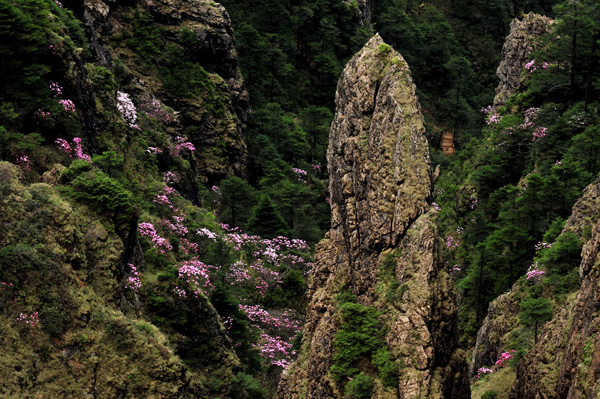Heritage sites protected on ground and from space
By Wang Kaihao (China Daily) Updated: 2016-07-21 07:54
 |
|
Scenery at Shennongjia, a forest area in Hubei province, which was recently listed as a UNESCOWorld Natural Heritage. [Photo/Xinhua] |
Shennongjia, a forest area in central Hubei province, was the most recent to be listed as a World Natural Heritage Site on July 17. The zone covers a 73,300-hectare area with another 41,500-hecatre buffer zone.
According to Ai Weiying, deputy head of the Shennongjia Forestry District government, the number of annual visitors will be capped at 798,000 annually - 14 percent more than last year - as the number of visitors is expected to increase as a result of the area's placement on the list.
"The quota was set based on a comprehensive analysis of the environment and the capacity of our tourism infrastructure," Ai said.
He added that more eco-friendly shuttle buses will be introduced at the site to better manage the tourists, who will only be allowed to follow preplanned itineraries within the zone.
"Drones will patrol around the area to keep a close eye the whole site," said Wang Daxing, director of the Shennongjia Natural Reserve Administration. "A monitoring system has been established."
Shennongjia is the biggest primary forest in Central China, the only intact subtropical forest ecological system in the world's middle latitude regions and home to many rare wild animal species, including more than 1,300 golden monkeys.
Xie Zongqiang, a researcher at the Chinese Academy of Sciences, said Shennongjia's outstanding biological diversity and significant indication of ecological processes are key reasons it became a World Natural Heritage site, so the protection of the living environment for animals remains a focus.
Zhang Linwei, deputy director of the ministry's urban construction department, said satellite sensing technology will be used to monitor not only Shennongjia but other World Natural Heritage Sites in China. The technology will help spot possible hazards and changing conditions.
"High-tech approaches are necessary for the protection over these sites," Zhang said. "However, the public's participation and supervision cannot be ignored. The title of World Heritage is not the goal. This is a chance to educate and nurture people's consciousness safeguarding those places."
He added that combining protection and utilization of resources at the heritage sites is a significant innovation.
In 2015, China's previous World Natural Heritage sites received 180 million visitors, took in 7 billion yuan ($1.04 billion) in revenue and offered 90,000 job opportunities to local communities, which is a crucial way to develop the economy for some poverty-stricken areas, he said.
"But, reasonable plans and sound rules have to be made before development," Zhang said.
China now has 11 World Natural Heritage Sites, second in the world after Australia, and four mixed cultural and natural sites.
- Brace for deluge, Xi tells nation
- Li says new plan shows innovation's top priority
- Manila urged to 'walk out of its wrong path'
- China repatriates 141 fugitive officials since 2015
- Li says private investment needs boost
- Ex-minister: Provocations prompted naval drill
- China plans bureau for immigration, report says
- Beijing 'will never' halt island work
- Rain keeps the floods coming
- 8,000 schools in UK to add Chinese math system










